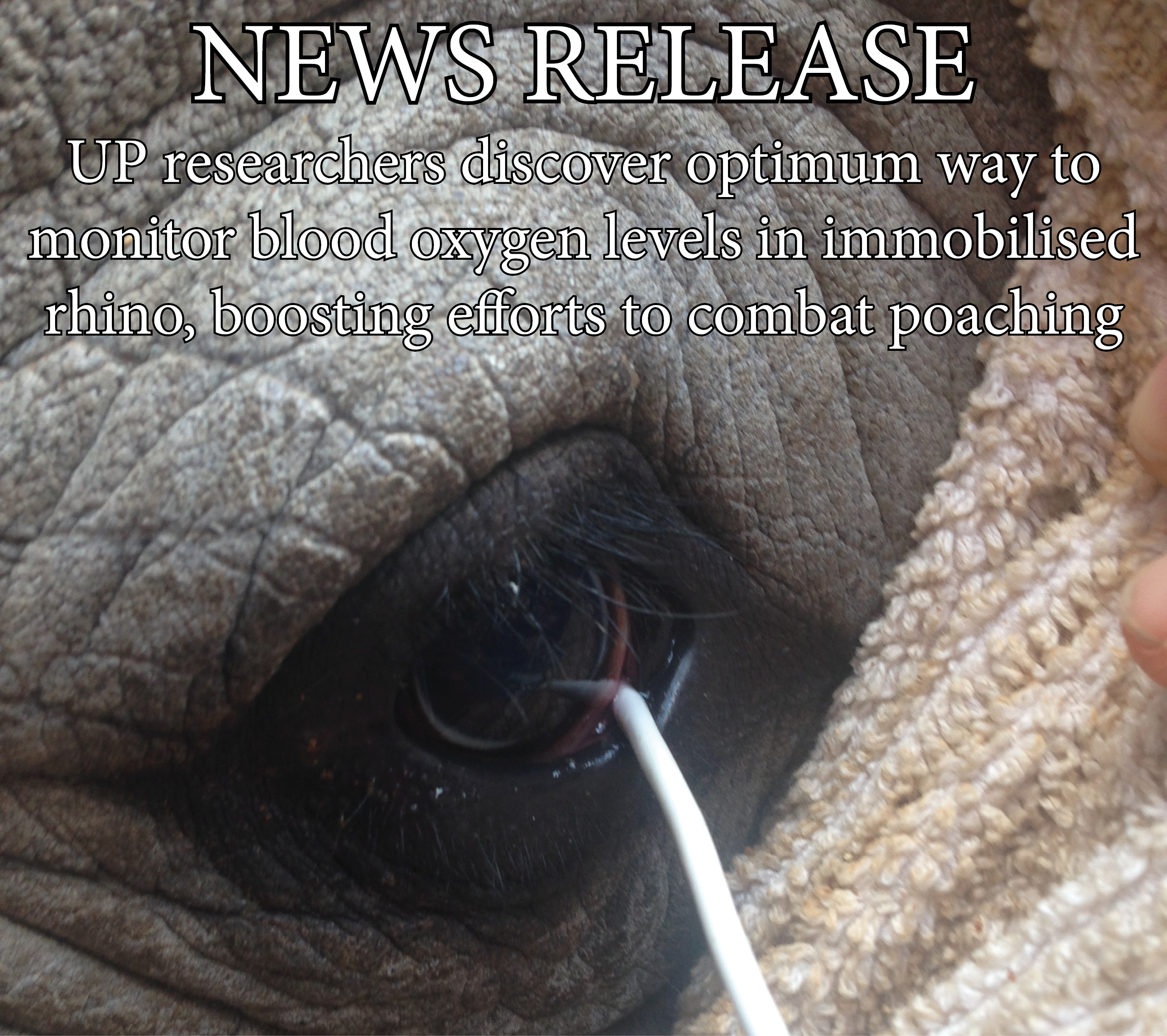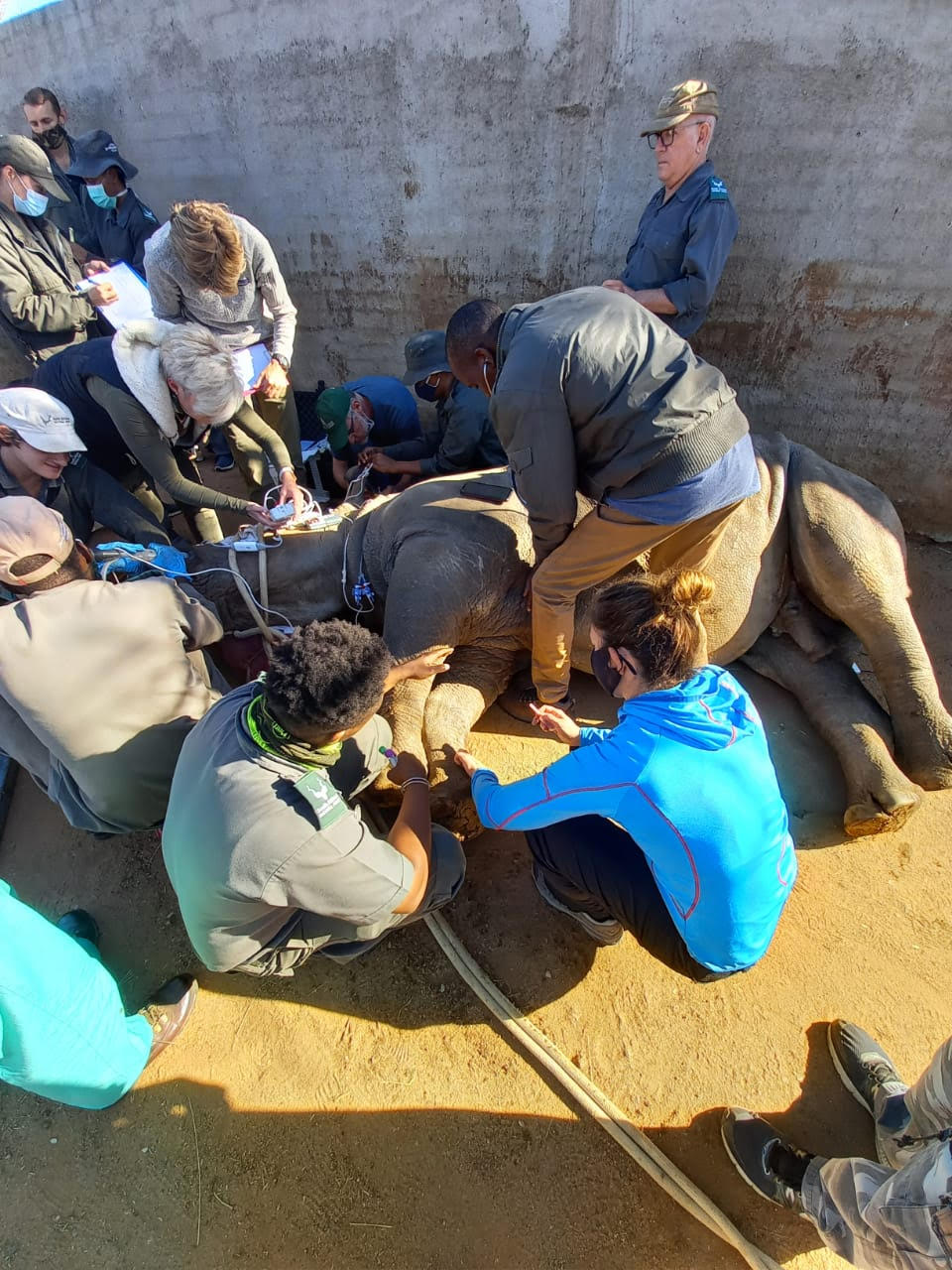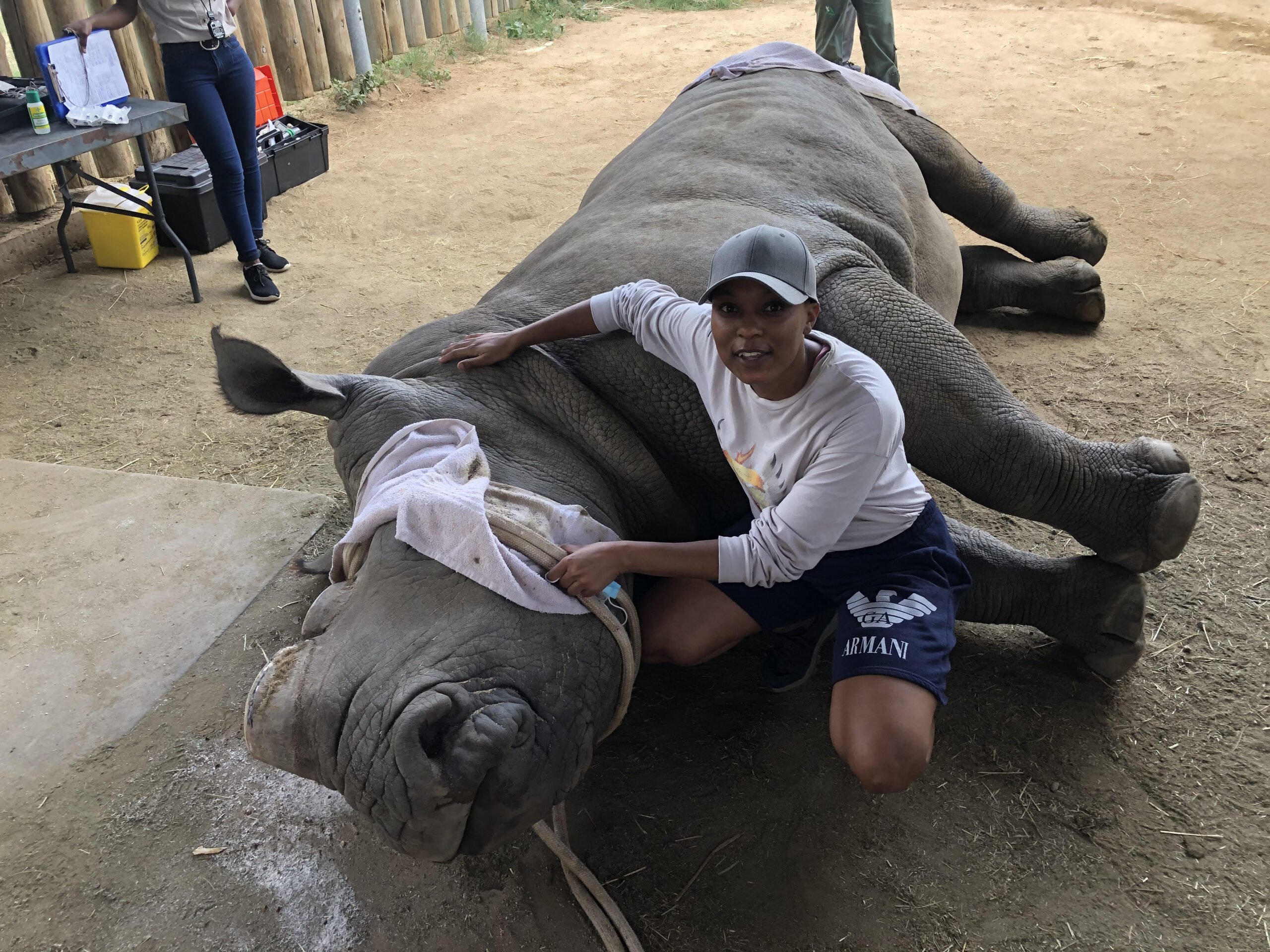PRETORIA – New research by scientists at the University of Pretoria (UP) has shown that pulse oximeters, originally designed for humans, can be used more effectively to monitor the blood oxygen levels of rhinoceroses who are under anaesthesia and immobilised – by attaching them at an unusual site: the rhino’s ‘third eyelid’.
“The third eyelid is a crescent-shaped fold of the outer eye structure which forms a thin, semi-transparent ‘blinking’ membrane over the eye,” explains Dr Thembeka Mtetwa, an early-career comparative physiologist of UP’s Faculty of Veterinary Science. Immobilising rhino for dehorning or relocation is becoming a routine procedure for wildlife veterinarians working on the frontline to protect these animals from poaching. However, during these procedures, the rhino’s lungs and heart may not respond well to the potent immobilising drugs.
“The drugs can negatively affect cardio-respiratory function; this can cause blood oxygen to drop to dangerously low levels,” Dr Mtetwa says.
While the risks are managed as carefully as possible during these procedures, one of the greatest challenges to date has been identifying a reliable, field-friendly means of monitoring the animal’s blood oxygen levels. Monitoring these levels is essential for making important decisions, such as whether to administer drugs to stimulate breathing or to give oxygen to the rhino.
That is why UP researchers have been working to adapt the use of existing technology and testing it in the field to find an appropriate solution.






